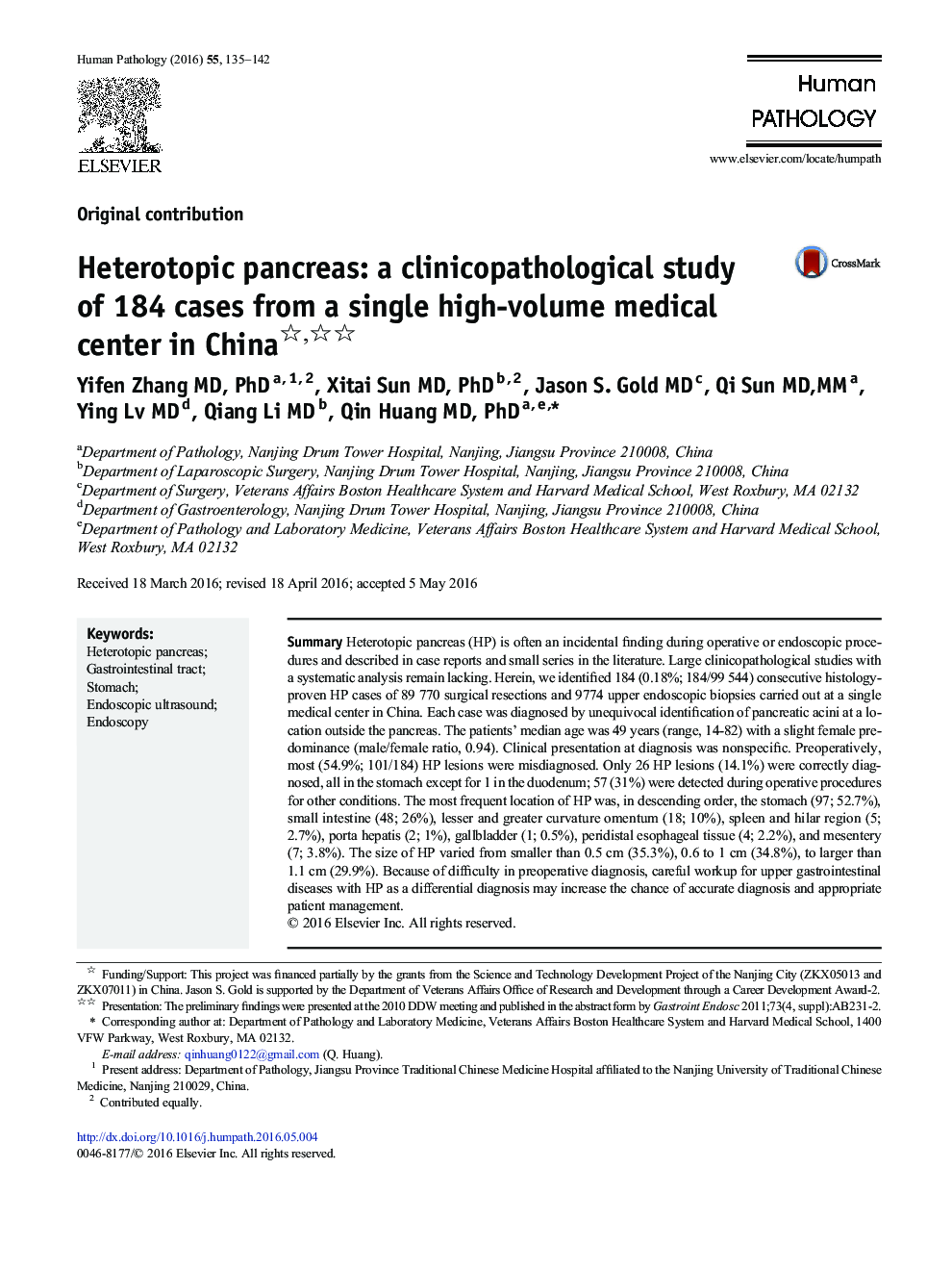| Article ID | Journal | Published Year | Pages | File Type |
|---|---|---|---|---|
| 6215285 | Human Pathology | 2016 | 8 Pages |
SummaryHeterotopic pancreas (HP) is often an incidental finding during operative or endoscopic procedures and described in case reports and small series in the literature. Large clinicopathological studies with a systematic analysis remain lacking. Herein, we identified 184 (0.18%; 184/99 544) consecutive histology-proven HP cases of 89 770 surgical resections and 9774 upper endoscopic biopsies carried out at a single medical center in China. Each case was diagnosed by unequivocal identification of pancreatic acini at a location outside the pancreas. The patients' median age was 49 years (range, 14-82) with a slight female predominance (male/female ratio, 0.94). Clinical presentation at diagnosis was nonspecific. Preoperatively, most (54.9%; 101/184) HP lesions were misdiagnosed. Only 26 HP lesions (14.1%) were correctly diagnosed, all in the stomach except for 1 in the duodenum; 57 (31%) were detected during operative procedures for other conditions. The most frequent location of HP was, in descending order, the stomach (97; 52.7%), small intestine (48; 26%), lesser and greater curvature omentum (18; 10%), spleen and hilar region (5; 2.7%), porta hepatis (2; 1%), gallbladder (1; 0.5%), peridistal esophageal tissue (4; 2.2%), and mesentery (7; 3.8%). The size of HP varied from smaller than 0.5 cm (35.3%), 0.6 to 1 cm (34.8%), to larger than 1.1 cm (29.9%). Because of difficulty in preoperative diagnosis, careful workup for upper gastrointestinal diseases with HP as a differential diagnosis may increase the chance of accurate diagnosis and appropriate patient management.
